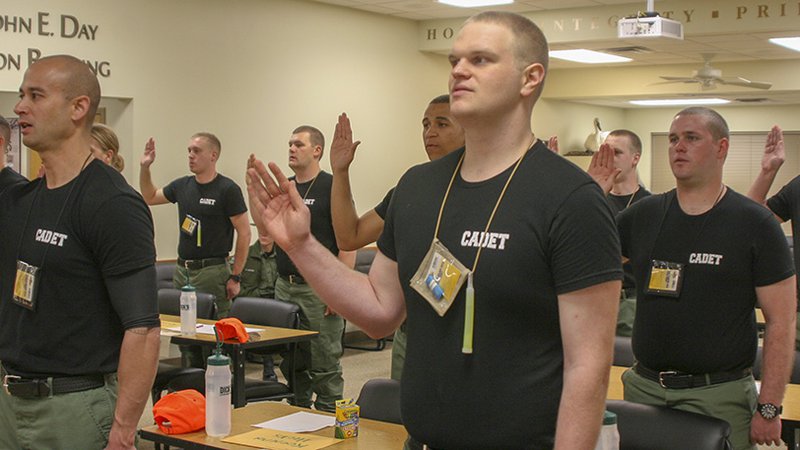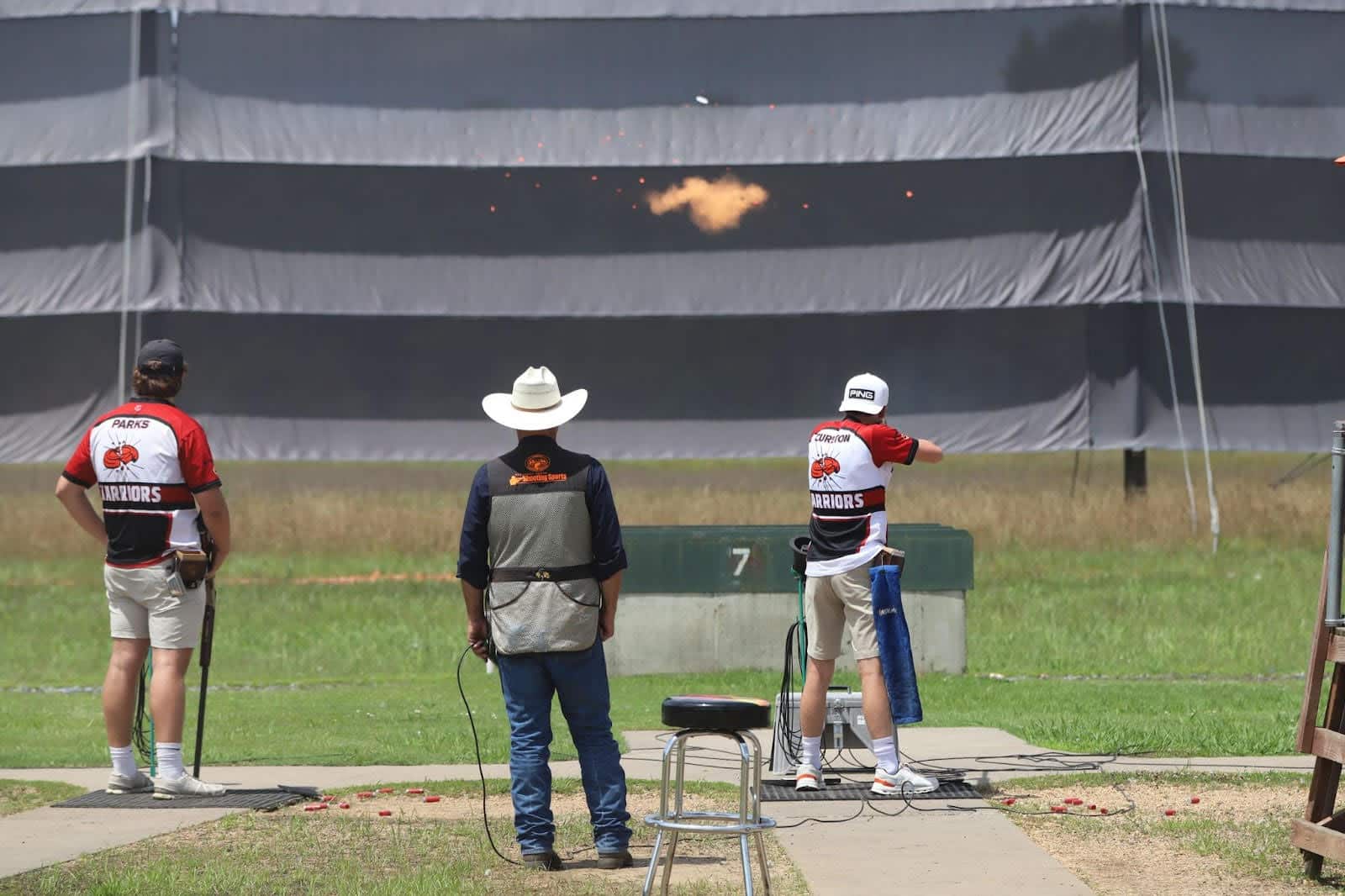AGFC Enforcement Division begins training of 16 cadets
BY Jim Harris
ON 03-27-2019

March 27, 2019
Jim Harris
Managing Editor Arkansas Wildlife Magazine
MAYFLOWER – The Arkansas Game and Fish Commission welcomed 16 cadets into their 18-week enforcement training period with their official swearing-in on Monday, May 18.
The 15 men and one woman are now wildlife officer cadets and employees of the AGFC as they go through training at H.C. “Red” Morris Enforcement Training Center off Arkansas Highway 89. The AGFC holds one enforcement training class per year; the process for these cadets to become wildlife officers began last fall.
“It’s a six-month process to get to this point,” said Lt. Tracey Blake, assistant training administrator at the center. “That includes advertising for the positions, receiving their applications, the interview process, testing for physical fitness. It’s pretty extensive, and it has to be. It’s a law enforcement profession. The physical demands of the job are pretty tough.
“We have to make sure everyone has clean backgrounds and that nature. It’s also a highly competitive position within the state.”
Future AGFC wildlife officers are trained the same way as individuals would train in Camden to be an Arkansas State Police officer, and they have similar state law enforcement duties, with one exception.
“The only difference between us and the State Police, we go a little farther off the road,” Blake said. “We go into the woods a little bit. Otherwise, our two training curriculums are pretty similar.”
Blake says the average class size ranges from 12 to 14 individuals, making this group slightly above average and one of the larger ones in recent years. One of the 16 cadets is from out of state, Blake said. “He and his wife moved here four months ago. She’s in the Air Force and he worked in his home.”
Blake added that out of the newest class, “we have four who have prior law enforcement experience. The rest are just out of college, while some have a military background. We have three 21-year-old kids in here.”
The 18-week curriculum is longer than previous years, Blake said. The most recent and slightly smaller classes went through 16-17 week sessions. Much of the curriculum and its length depend on the class size, Blake said, and some of the larger classes went through 22 weeks of training. “You have so many in the school, you want time to get everything in with everyone.”
The Mayflower center has held training since 1984. Blake, who joined the agency in 2005, said, “I started out helping out during the training. The past three years, I’ve worked here full time. Not a day goes by that I’m not here for the duration of the training.”
Capt. Sydney Carman, Blake and two secretaries run the curriculum along with the AGFC’s Enforcement Division administration.
“We all have some input on what we want to have in the school, and we consult with our instructors, which are our officers,” Blake said. “As many as 80 to 90 wildlife officers will rotate through the school in some form of teaching capacity.”
The newest cadets arrived at the center by 6 p.m. on Sunday, March 17, to begin their training. After an early wakeup for 5:30 a.m. physical training and showering, it was breakfast at just after 7 a.m. in the center’s kitchen. Some cadets were assigned KP duties, scrubbing the floors and windows. Then, it was to the main classroom next door, where Federal Magistrate Judge Patricia Harris of the Eastern District of Arkansas swore in the cadets, who were often being reminded by a designated instructor, or DI, where to properly place their hands at attention, or to have the classroom stocked with coffee from the kitchen. The cadets spend training Monday through Friday, staying overnight on site, and have their weekends free for the next four months.
“This week is a big transition period for them,” Blake said. “They have to learn how to conduct themselves as officers. They are learning the rules and policies of the training center and other cadet school functions.”
Two officers from the Tennessee Wildlife Resources Agency, Capt. Andy Rush and Lt. Shelley Hammond, and a secretary were on site Sunday through Wednesday of the first week observing the training.
“We’re about to move toward our first full training center,” Rush said. “In the past we have gone through the Tennessee Law Enforcement training center and had a partial session with us. We’ll be starting our first full training later this year with a 20-week training curriculum in Humphrey County, Tennessee, at Buffalo Ridge Refuge. The barracks are under construction now. We’ll be here a few days to see how Arkansas does things.”
At the end of 18 weeks, upon graduation from the academy, the cadets will receive their county office assignments and continue their careers with the AGFC.
“I tell the cadets this: We hope by the end of this training that they are capable and ready to learn more about the job and contribute to their communities and the state and be great representatives of our agency,” Blake said. “That’s why we preach our values here and they go over our mission statement because that’s what they are going to represent.”
Recent News

Arkansas Wildlife Weekly Fishing Report
Apr. 24, 2025

Contenders take aim as shooting sports regionals begin
Apr. 23, 2025
Subscribe to Our Weekly Newsletter E-mails
Don’t miss another issue. Sign up now to receive the AGFC Wildlife Weekly Newsletter in your mailbox every Wednesday afternoon (Waterfowl Reports are published weekly during waterfowl season and periodically outside the season). Fishing Reports arrive on Thursdays. Fill in the following fields and hit submit. Thanks, and welcome!
